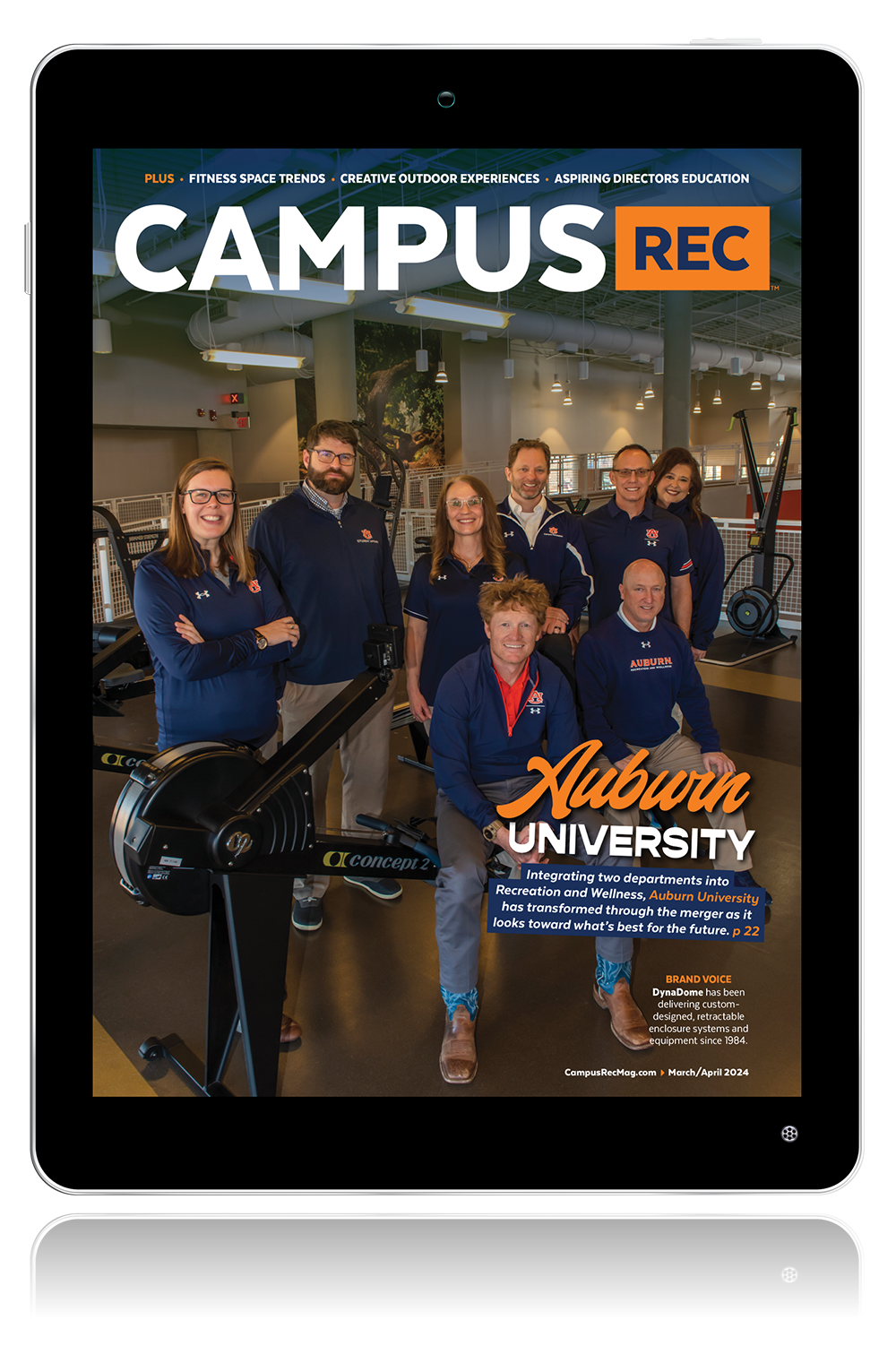According to the National Intramural-Recreational Sports Association’s (NIRSA) Facility Construction & Renovation at NIRSA Member Institutions 2016-2020 report, 60 percent of reporting institutions indicated they have planned or have ongoing campus recreation facility construction projects with expected completion dates before Dec. 31, 2020. These projects will total more than $1.8 billion in construction costs.
The NIRSA report reveals colleges and universities are investing a great deal of capital into new and renovation campus recreation projects. They see the value these buildings can bring to the health of their students, their recruitment and retention strategies, and long-term plans for campus expansion. With so much at stake, it’s important these institutions leverage every possible tool in the design and construction of their new facilities.
Fortunately, virtual reality (VR) has quickly advanced from a buzzword to a real asset for campus leaders and designers – making it an important new tool. The technology’s ability to assure outcomes and reduce cost and risk can help ensure colleges and universities are creating the best spaces for their students, communities and own future.
While photos of people wearing VR goggles may still seem a bit futuristic or fun, the advantages they can yield are serious. Here’s a look at four ways VR can bolster the design of campus recreation facilities today and into the future:
Engaging Students and Building Users
Engaging students, staff and other key stakeholders has always been an important step in the design of campus recreation centers. Being able to hear directly from these future building users about their preferences, needs, and hopes for new or renovated recreation spaces helps surface important ideas and issues that can strengthen the design process. To date, our best methods for soliciting this feedback has included group discussions, patient interviews, sharing images and trying to articulate how renderings and floor plans translate to actual weight training rooms, court spaces and/or lap pools.
All of these methods are still important, but VR can enhance them. Imagine being unsure about where to place an indoor jogging track in the new recreation center or whether to use an area for a climbing wall or additional multi-activity space. With VR models, design teams can actually embed students in these possibilities and document their real-time reactions and experiences. These VR models help students better understand the eventual building and better articulate their ideas, preferences and/or voice what they may dislike about current design ideas. This helps colleges and universities more accurately understand how key choices impact students and feel more confident in a final selection. VR empowers this level of feedback and can apply to just about every key space or decision that goes into creating successful campus recreation centers.
Essentially, VR knocks down communication barriers between building users and design teams, ensuring better decision-making and design solutions.
Assurance of Outcomes
Just as VR can strengthen communication between future building users and design teams, it can also help assure those institutions investing capital in the project. It can be hard for campus leadership teams to look at sketches, floor plans and renderings, and fully understand the facility they’re creating. VR models can alleviate this challenge as they allow these individuals to experience the spaces during any and every phase of a project before it exists. Once virtually inside a model, stakeholders can understand different features in new ways and establish a stronger sense of the spatial scale of key spaces and the building. This all leads to key questions answered earlier, faster resolution of any challenges that may arise and stronger dialogue with design teams throughout the life of a project.
Leveraging VR to its full potential helps stakeholders feel more confident they’re investing capital strategically and driving toward a facility that will best empower their students, campus and community.
Faster Decision Making and Stronger Cost Control
Given the stronger communication VR fosters during the design and construction of a new or renovated campus recreation center, it accelerates decision-making at every step in the design process which usually translates to both time and cost savings. Every time a designer uses a VR model to show clients a new space or facility feature, and they can eliminate needing to create a new rendering or schedule a follow-up meeting, they move a step closer toward delivering the project on schedule and on budget. While the creation of a VR model for a new campus rec center may require more resources up front, it absolutely pays higher dividends as a project advances.
Building Energy and Excitement
Once colleges and universities recognize the serious potential of VR, there’s nothing wrong with embracing the “cool factor” that comes with the technology. The creation of these facilities are huge moments for institutions that take time, and it’s important to always be driving excitement with students, staff, donors, alumni and more. VR can help build this excitement about projects as the models and flythroughs generated can be sent to local media and/or posted on social media. For example, an university shared a video of a VR model to their social channels and earned over 55,000 views in just one week. The institution also hosted an event during which key stakeholders could experience the model – there was even a basketball player shooting “virtual hoops” in the model as everyone watched.
While designers will always be fond of architectural sketches, we recognize they don’t usually build this kind of mainstream interest. VR definitely has a “cool factor” that can be leveraged to build excitement for projects before they open their doors.
Design teams have been excited about the potential of VR to engage clients and strengthen our work for years, and we’re now at a point where we can unleash the technology for exciting, positive results. When used the right way, VR can absolutely enhance the ability to create campus recreation centers that offer the best opportunities and experiences for students and staff.
John McAllister is an awarding-winning designer for CannonDesign focused on how new technologies and processes can help achieve design excellence. He has delivered successful projects for numerous high-profile institutions including University of Southern Indiana, the University of Missouri system, Webster University, Northern Kentucky University, University of Minnesota and University of Louisville.










